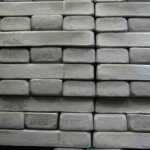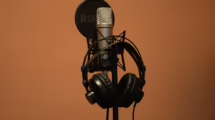Linguistics is a field rich with complexity, diversity, and insight into human culture, cognition, and communication. Among the myriad of languages and dialects, Albanian stands out not just for its geographical and historical context, but also for its unique morphological and phonological characteristics. Within this context, Gheg Albanian—one of the two primary dialects of the Albanian language—offers a fertile ground for linguistic exploration, particularly with the concept of "embryomorphemes."
Understanding Gheg Albanian
Gheg and Tosk are the principal dialects of Albanian, with Gheg spoken predominantly in the northern regions of Albania, Kosovo, and parts of Montenegro. Gheg Albanian exhibits distinctive phonetic, morphological, and syntactic features that set it apart. For instance, Gheg often retains certain archaic linguistic forms that have undergone significant evolution in Tosk, making it a valuable object of study for linguists interested in the evolution of Indo-European languages.
What Are Embryomorphemes?
The term "embryomorpheme" refers to phonetic or morphological units within a language that retain vestiges of earlier forms or meanings—much like embryonic cells that hold potential for future development. It implies a stage of linguistic evolution where these morphemes, while not fully developed or prevalent in contemporary usage, provide insights into the historical and structural lineage of a language.
In the context of Gheg Albanian, embryomorphemes are particularly intriguing due to the dialect’s retention of archaic features from the Proto-Indo-European language family. These morphemes often provide clues about the social and cultural transformations experienced by Albanian speakers over centuries.
Morphological Features in Gheg Albanian
1. Gender and Case Marking
Gheg Albanian exhibits a rich system of gender and case marking, contributing to the complexity of its morphological structures. Nouns are consistently marked for gender (masculine, feminine, and neuter) and decline for seven cases (nominative, accusative, genitive, dative, ablative, locative, and vocative). This intricate case system is a remnant of earlier Indo-European languages and showcases the extent of inflection in Gheg.
Embryomorphemes can be found in certain cases that are less frequently used today but hold a place in the language’s historical corpus. For instance, some nouns may retain archaic locative endings that have faded in Tosk, presenting an area where linguists can observe morphological change over time.
2. Verb Conjugation
Gheg verb conjugation is another fertile area for identifying embryomorphemes. The dialect maintains a range of tenses and moods, many of which are unique to Gheg. For example, certain future and conditional forms exhibit residual features that reflect historical practices instead of contemporary uses.
The presence of doubly-marked tense and aspect paradigms can reveal embryonically preserved elements, indicating earlier linguistic stages. This is an area where variations across Gheg-speaking regions often reflect underlying historical factors, tracing the evolution from common ancestor languages to present-day forms.
Phonological Features and Variations
1. Vowel Harmony and Consonant Alternation
Phonologically, Gheg’s vowel harmony and consonant alternation mechanisms showcase additional embryomorphemes. Certain vowel sounds within morphemes retain historical distinctions that are no longer relevant in many modern languages. This leads to unique pronunciation developments specific to Gheg, including complex diphthongs and consonantal shifts.
2. Influence of Other Languages
The influence of neighboring languages, including Serbian, Macedonian, and Italian, has introduced phonetic variations that interact with Gheg’s embryomorphemes. These influences demonstrate how external sociolinguistic dynamics shape and mold the language over time, creating layers of phonological history that can be traced back to earlier forms.
Socio-Cultural Considerations
Understanding embryomorphemes in Gheg Albanian also requires a socio-cultural lens. The dialect encapsulates the resilience of the Albanian identity amidst historical turbulence, migration, and cultural exchange. Each morpheme carries with it remnants of historical narratives, folklore, and social constructs inherent to the Albanian experience.
1. Language and Identity
For many speakers, Gheg Albanian is not just a means of communication; it is a badge of identity. As such, the preservation of embryomorphemes underscores ongoing efforts to maintain cultural heritage against the backdrop of globalization and linguistic homogenization.
2. Revitalization Efforts
Modern linguistic initiatives to document and revitalize the Gheg dialect reflect a growing awareness of the importance of preserving both language and culture. Understanding embryomorphemes is pivotal to these efforts, as they shed light on the linguistic heritage that informs contemporary Gheg Albanian.
Conclusion
Exploring embryomorphemes within Gheg Albanian is a journey into the depths of human history, cognition, and cultural identity. Through the linguistically rich tapestry of Gheg, scholars can uncover traces of the past that inform our understanding of the present and future of language. As the Albanian language continues to evolve, the study of these morphologically and phonologically significant features remains vital—offering not only insights into linguistic evolution but also a window into the enduring spirit of the Albanian people. The intricacies of Gheg Albanian immortalize the past while lending voice to the continuous narrative of humanity.

























Add Comment